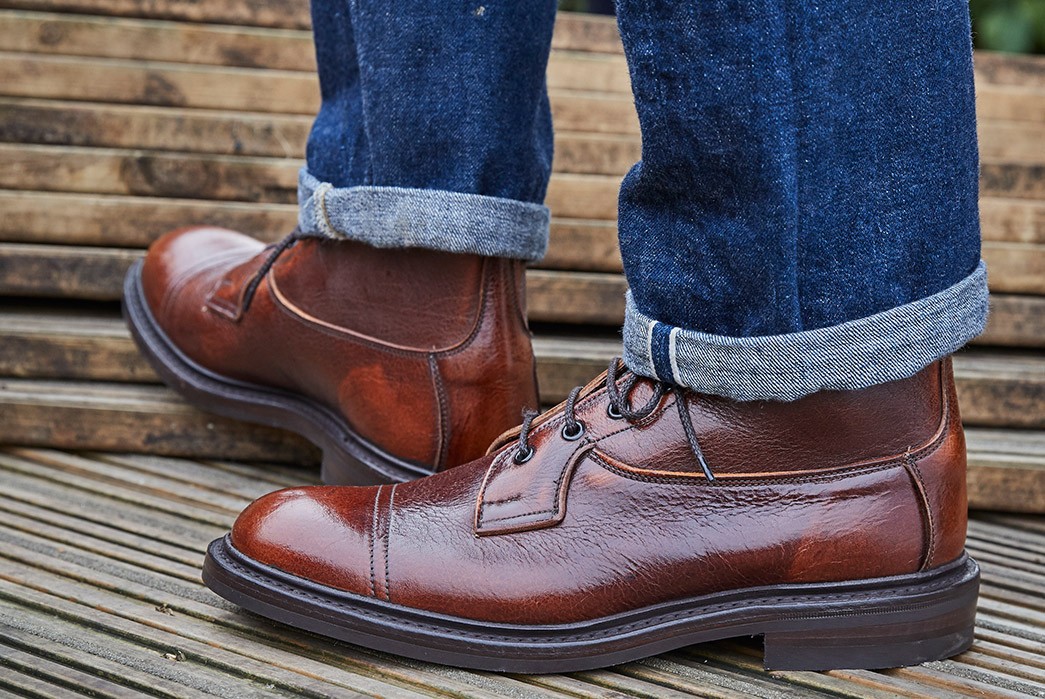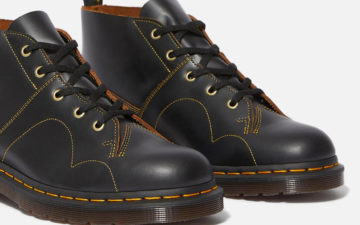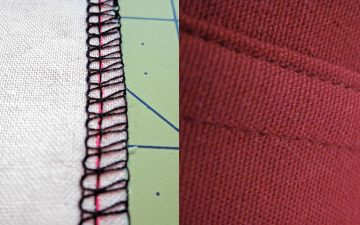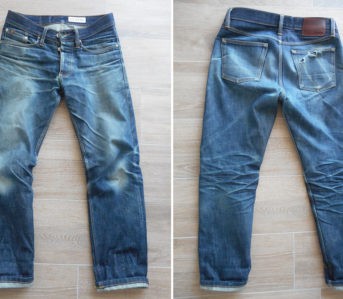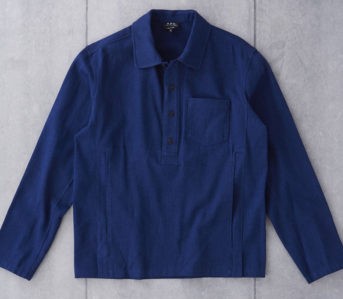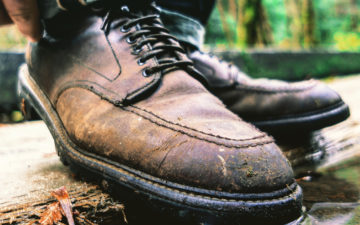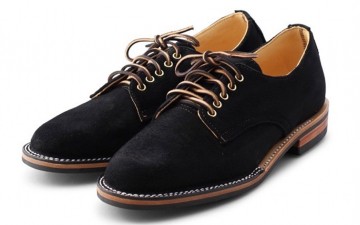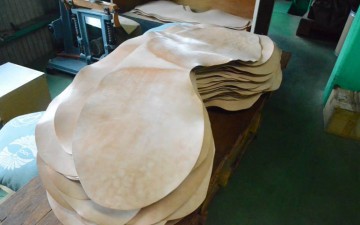You may have noticed that we’re big on leather ’round these parts. Cow and horsehide are commonplace in the world of heritage clothing, and while a good quality hide from either of those animals is enough to get us giddy, it’s the less common leathers out there that really offer something truly different. Leathers like Kudu. Kudu leather has been used by many of our often-featured brands such as Alden, Truman, and Viberg, and the odd appearance in our daily Fade features has highlighted its potential for glowing patina. But what is Kudu leather? If you want to know the answer to that question, take a seat, and we’ll give you the todo on Kudu.
What is Kudu?
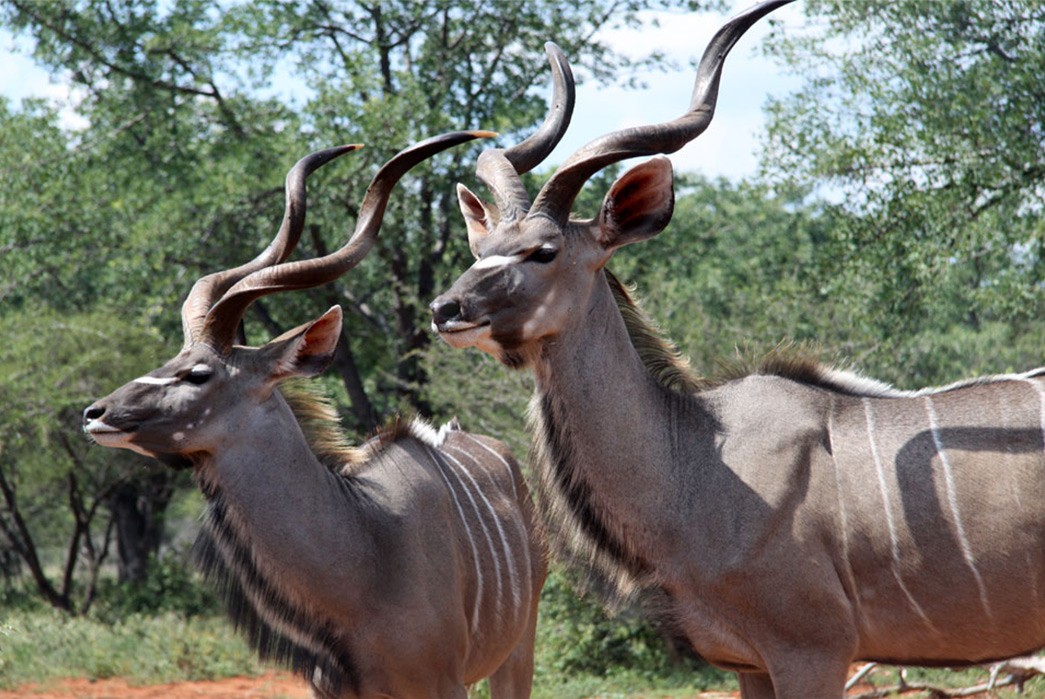
Greater Kudu via Rainsford Hunting.
Kudu leather is the hide from an African-native species of Antelope named – you guessed it – Kudu. The Greater Kudu is a large animal with sizeable twisted horns and a grey or brown short-haired coat that features distinctive vertical white stripes. As the kudu is not currently reared or farmed, all hides come from hunted wild kudu. Kudu leather is chiefly used to make shoes, boots, jackets, and other garments, but it is also used for upholstery.
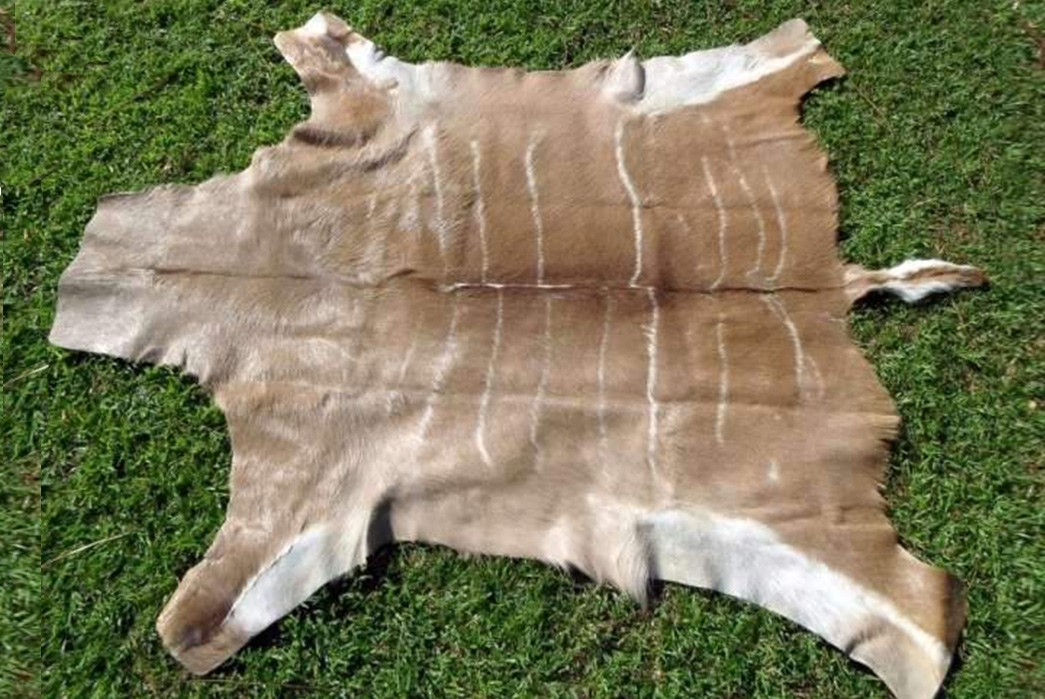
A hair on kudu hide. Image via African Crafts Market.
Confusingly, the iconic American tannery Horween uses the name ‘Kudu’ to describe the color of one of their Calfskin leathers, so be aware this leather is not sourced from the Greater Kudu.
The Characteristics of Kudu Leather
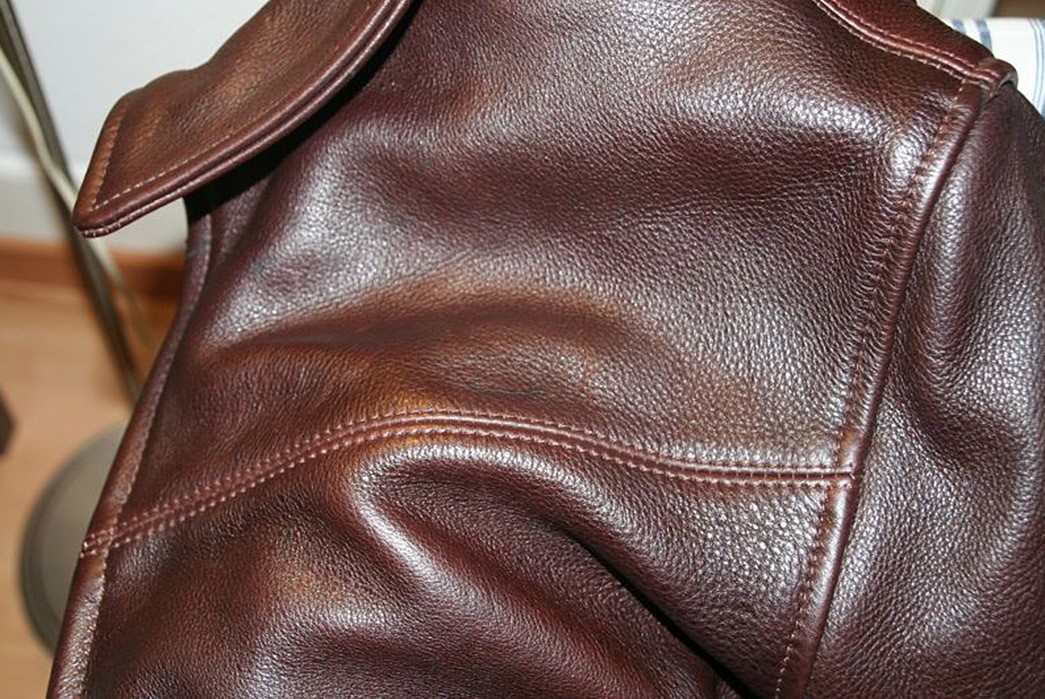
Kudu leather jacket. Image via The Fedora Lounge.
Kudu leather typically comes in a dark brown color that’s comparable to seal brown horsehide, but it may also come in light grey. A mid-to-lightweight leather with a soft hand, Kudu often has a subtle sheen which only helps to illuminate the rich, pebbled texture of the hide.
During life in the wild, Kudu regularly graze amongst the sharp, thorny trees in the African brush, leaving their hides with natural scars and scratches that make each piece of leather completely unique. The reverse of the Kudu hide can also be used to make a buttery suede which, in contrast to the aforementioned exterior leather, is smooth, even, and blemish-free.
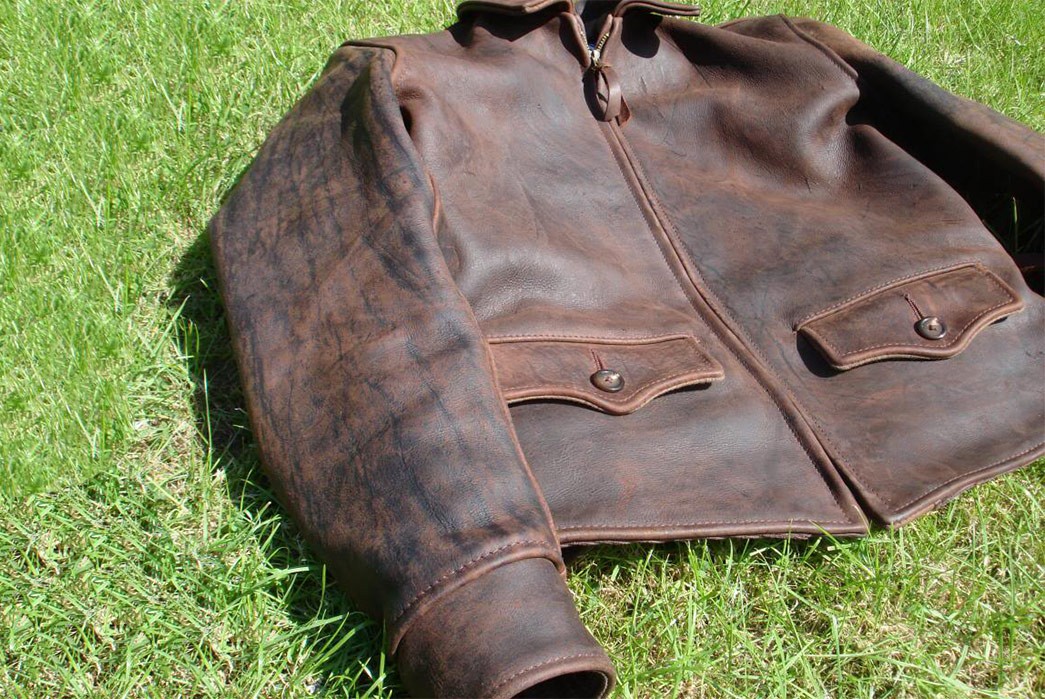
Kudu leather jacket. Image via The Fedora Lounge.
Just like deer or goatskin, Kudu leather is immensely strong, and ages gracefully thanks to its malleable composition which makes for deep creasing. With enough wear, Kudu leather develops a rich, rugged patina as you add your own battle scars next to those naturally formed on the African plains. It is these characteristics that have prompted admirable brands like Aero Leather and Viberg to use Kudu leather on their products as the qualities of the hide resonate with their clientele.
Is Kudu Leather Sustainable?
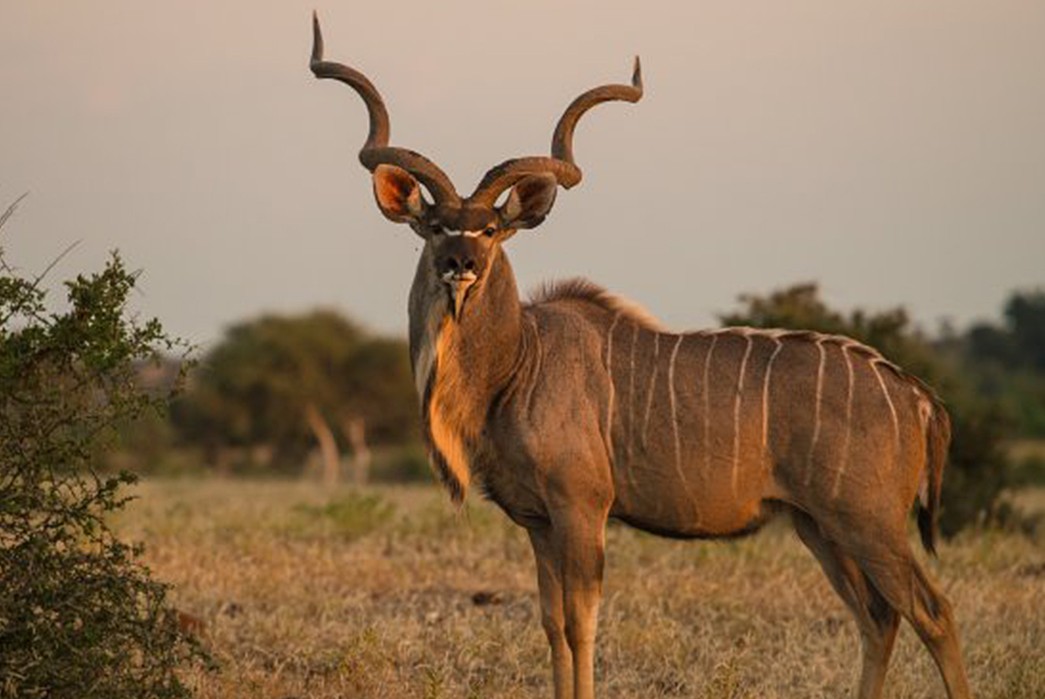
Greater Kudu. Image via Trip Advisor.
The culling and hunting of Kudu is the result of a mandate issued by the South African government to control the overpopulation of the Greater Kudu. As well as their hides, the meat and horns of the Greater Kudu are sold at local markets, which benefits indigenous communities and reduces waste. This ultimately means that to some extent, Kudu leather can be classed as a sustainable animal by-product which has little impact on the environment, or indeed the conservation of the species.
So even though Kudu is a hunted and exotic leather, it is one that can be consumed with a relatively clear conscience when it comes to environmental sustainability.
Kudu Leather Products
Russell Moccasin Joe’s Kudu PH
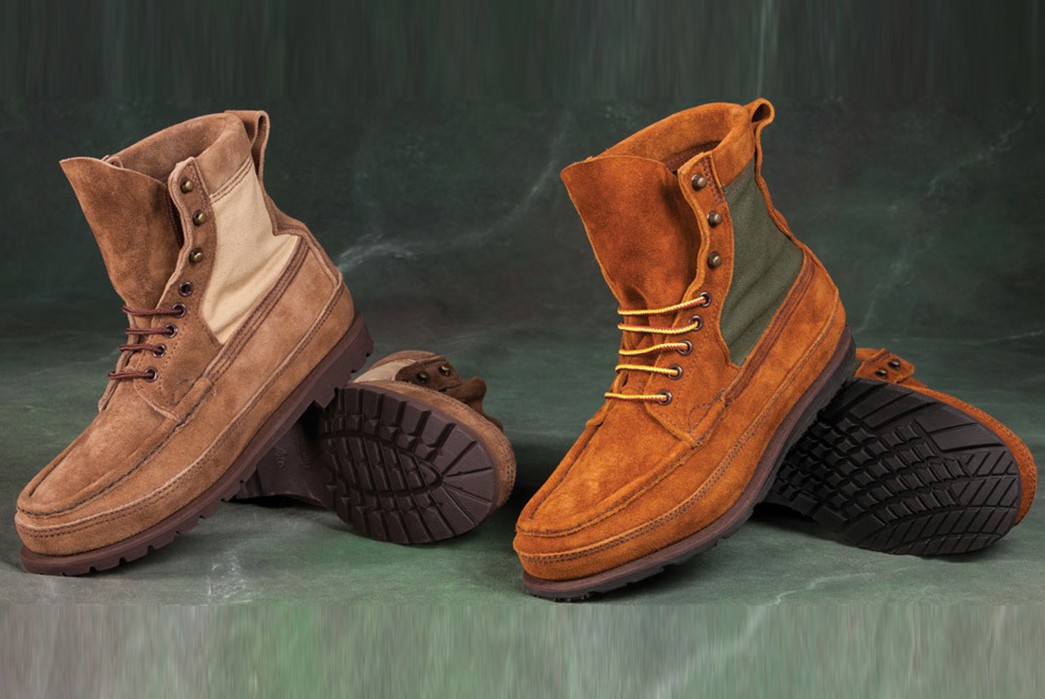
The Joe’s PH model by Russell Moccasin is seen here in lush Kudu suede. Coming in two colorways – Beaver and Autumn Spice – the Joes Kudu PH is fully customizable if ordered from Russell Moccasin, featuring contrasting canvas insets and a choice of soles. The Kudu suede upper is constructed with moc-toe stitching and laces up with a combination of five eyelets and three speedhooks.
Available from Russell Moccasin, starting at $470.
Viberg Service Boot Snuff Kudu
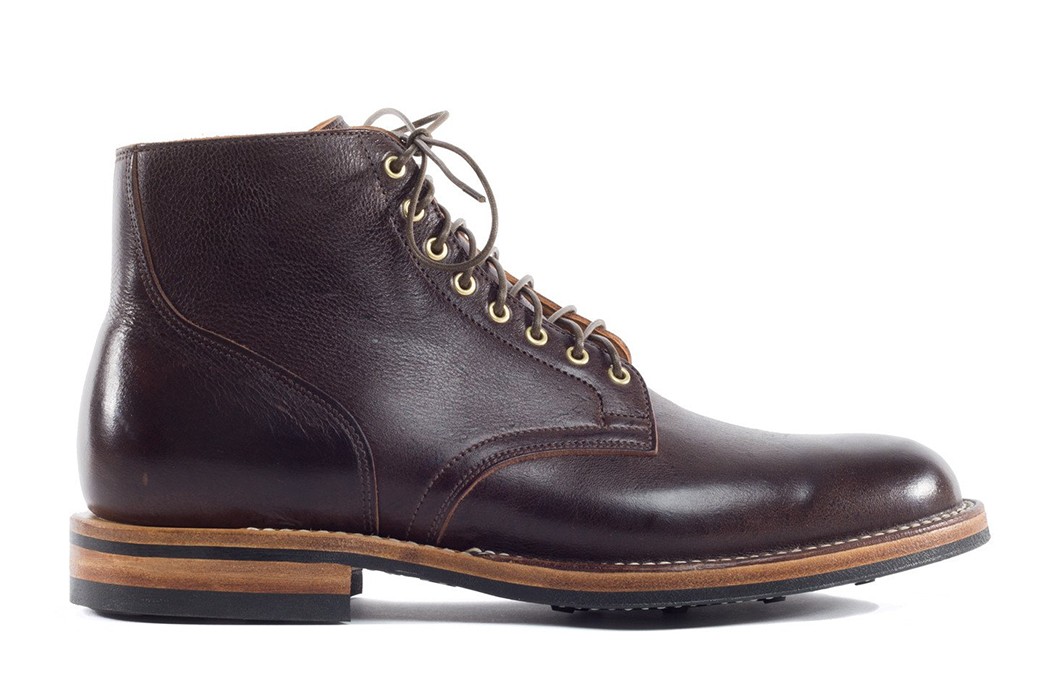
Viberg’s Service Boot needs no introduction, but this edition sees the Canadian brand use British Snuff Kudu leather, which has been treated with wax during the tanning process to achieve a slick, lustrous sheen that maintains the hides’ natural markings perfectly. Built on Viberg’s 2030 last, this service boot features brass eyelets and sits on a Dainite Sole with stitchdown construction.
Available for $710 from Viberg.
Tricker’s Toe Cap Boot
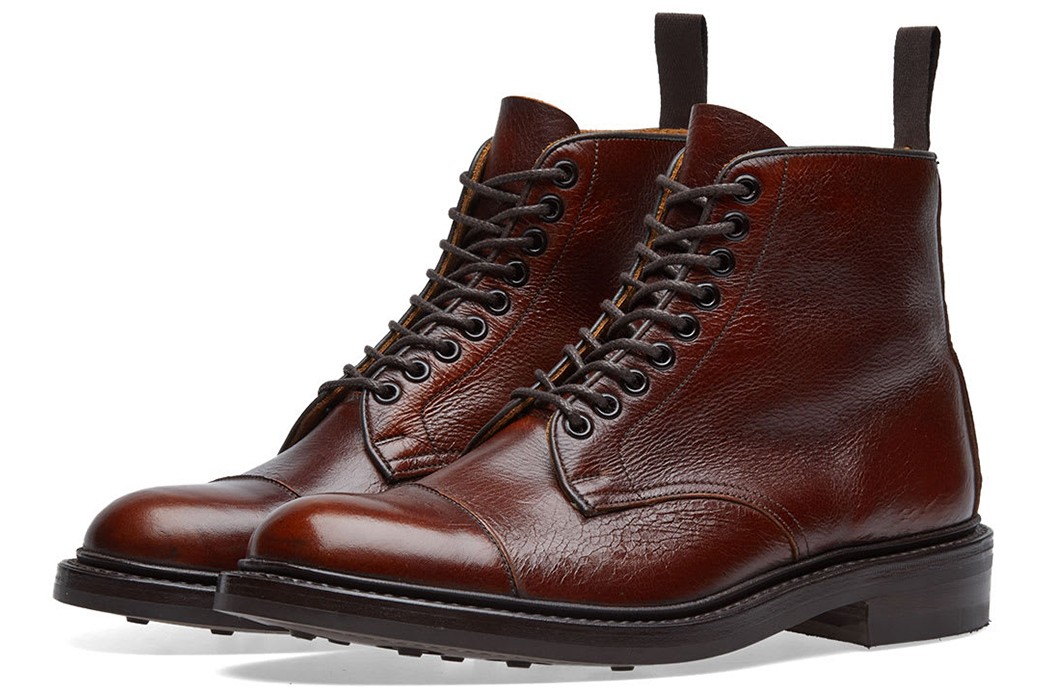
Handmade in England, these Toe Cap boots by Tricker’s use a highly textured Kudu leather. Grounded on a Dainite rubber sole, the supple Kudu upper features a rounded toe cap and canvas heel pull. In addition, these nine-hole boots are built with Goodyear welt construction, so they can be recrafted whenever necessary.
Available for $592 at End Clothing.

